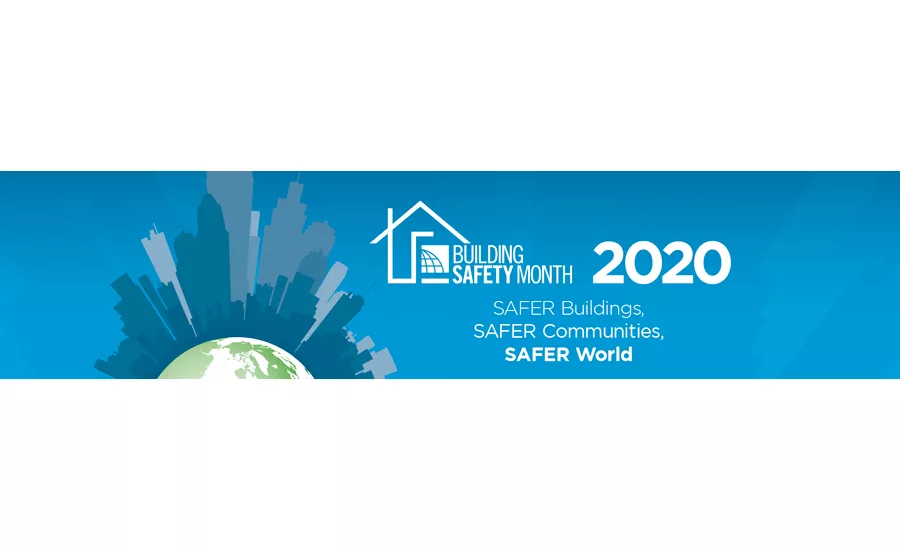Building Safety Month calls attention to the need for water conservation and efficiency
Water is vital to our communities, economy and public health.

Did you know that although 70% of our planet is covered with water, less than 1% is drinkable? Clean water is the world’s most precious commodity and accessing it is still a challenge for many populations around the globe. To ensure populations have access to clean water as they grow, the International Code Council, in addition to many jurisdictions, manufacturers and organizations, are working to improve water conservation, label new homes and structures as more water efficient and spread the word about the need for smart water use.
As of 2019, 1 billion people — let that sink in — live without safe water at home, according to WorldWaterDay.org. And the World Health Organization (WHO) estimates that by 2025, half of the world’s population will be living in water-stressed areas. The Flint, Michigan, water emergency and drought in South Africa are just two examples that shine a spotlight on a growing global issue. Not only is water vital to our communities and economy, it’s also important for public health.
Collectively, there is much that can be done when we all act together. Here are a few ways to help promote water conservation and efficiency.
APPLY THE MOST MODERN BUILDING CODES
One way to make sure water is being used efficiently is to implement the most modern, up-to-date plumbing codes. Modern building codes lead to resilient communities, safe plumbing and efficient technologies. Plumbing professionals and well-trained code officials help to maintain these systems and ensure our communities have safe, accessible water.
Plumbing codes are important and help ensure the proper performance of plumbing systems in residential and commercial buildings. For example, the International Plumbing Code (IPC) incorporates innovative technologies and detailed engineered designs that permit the installation of smaller, more precise water usage and water drainage systems, resulting in the savings of millions of gallons of water.
Plumbing codes are also critical for emergency situations like the current pandemic. For example, code officials ensure that healthcare infrastructure, including temporary structures and occupancies, are built and maintained to ensure safety. From adequate facilities to ensure handwashing to safe and sanitary plumbing systems that mitigate the spread of contagions and much more, the role of code officials and inspectors remains vital.
HARVEST RAINWATER
Another significant way to conserve water and use it more efficiently is through rainwater harvesting which captures, diverts and stores rainwater from a structure or surface in order to store it for later use. Modern rainwater harvesting systems have not yet become commonplace in North America. However, in many locations with constrained or contaminated sources, interest in the use of rainwater harvesting systems for both potable and non-potable use has grown in recent years.
With the recent publication and release of the 2021 IPC, the CSA B805/ICC 805 standard was included as an alternative for collection and distribution systems using rainwater. Furthermore, this same standard will be part of the 2021 International Residential Code (IRC) which is slated to be published later this year. This CSA B805/ICC 805 standard addresses roof surface rainwater and stormwater being used as source water for single-family, multi-residential and non-residential environments. It also addresses non-potable applications like irrigation, fire protection, toilet and urinal flushing and vehicle washing. In addition, potable applications such as food preparation, dishwashing and bathing are also included where permitted by the applicable jurisdiction.
LOOK FOR THE WATERSENSE LABEL
Programs like the U.S. EPA’s WaterSense Program aim to help identify water efficient products that meet EPA’s criteria for efficiency and performance. To receive WaterSense certification, products undergo rigorous testing for efficiency and performance.
Since its inception in 2006 through 2018, WaterSense has helped Americans save a cumulative 3.4 trillion gallons of water and more than $84.2 billion in water and energy bills, according to the EPA. Additionally, the use of WaterSense labeled products saved 462.5 billion kWh of electricity.
PROMOTE WATER SAFETY
May marks Building Safety Month — an educational, interactive campaign presented by the Code Council to help promote the importance of building safety. The theme for 2020 is “Safer Buildings, Safer Communities, Safer World,” with each week focused on a different topic. This year, week two is centered around water safety, bringing awareness to its importance and urging action to ensure clean water through proper construction, conservation and safe disposal.
Although water safety will be a focus for second week of May, it’s important for us to implement water conservation and efficiency methods all year round to ensure the health and well-being of all.
Looking for a reprint of this article?
From high-res PDFs to custom plaques, order your copy today!








